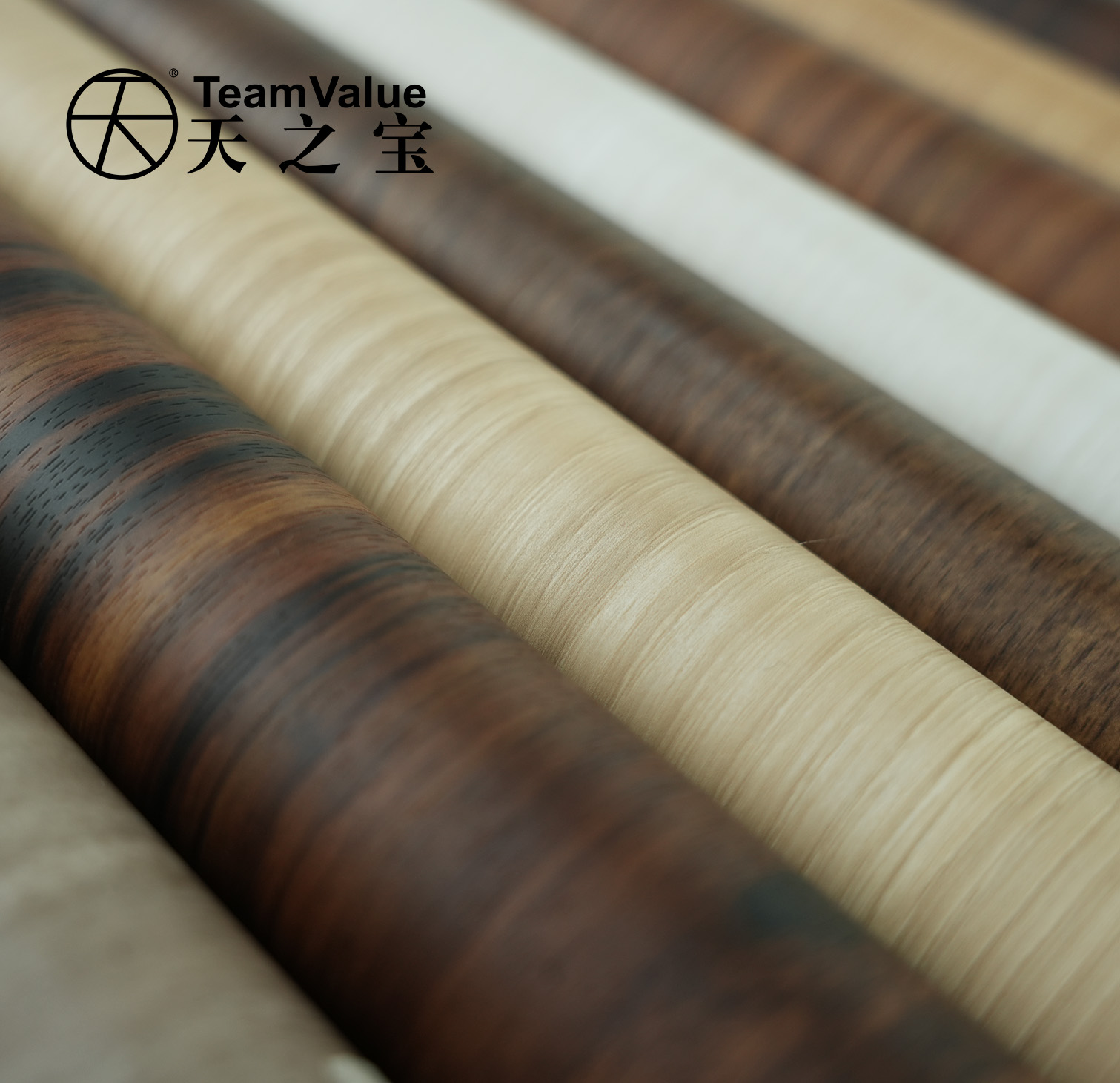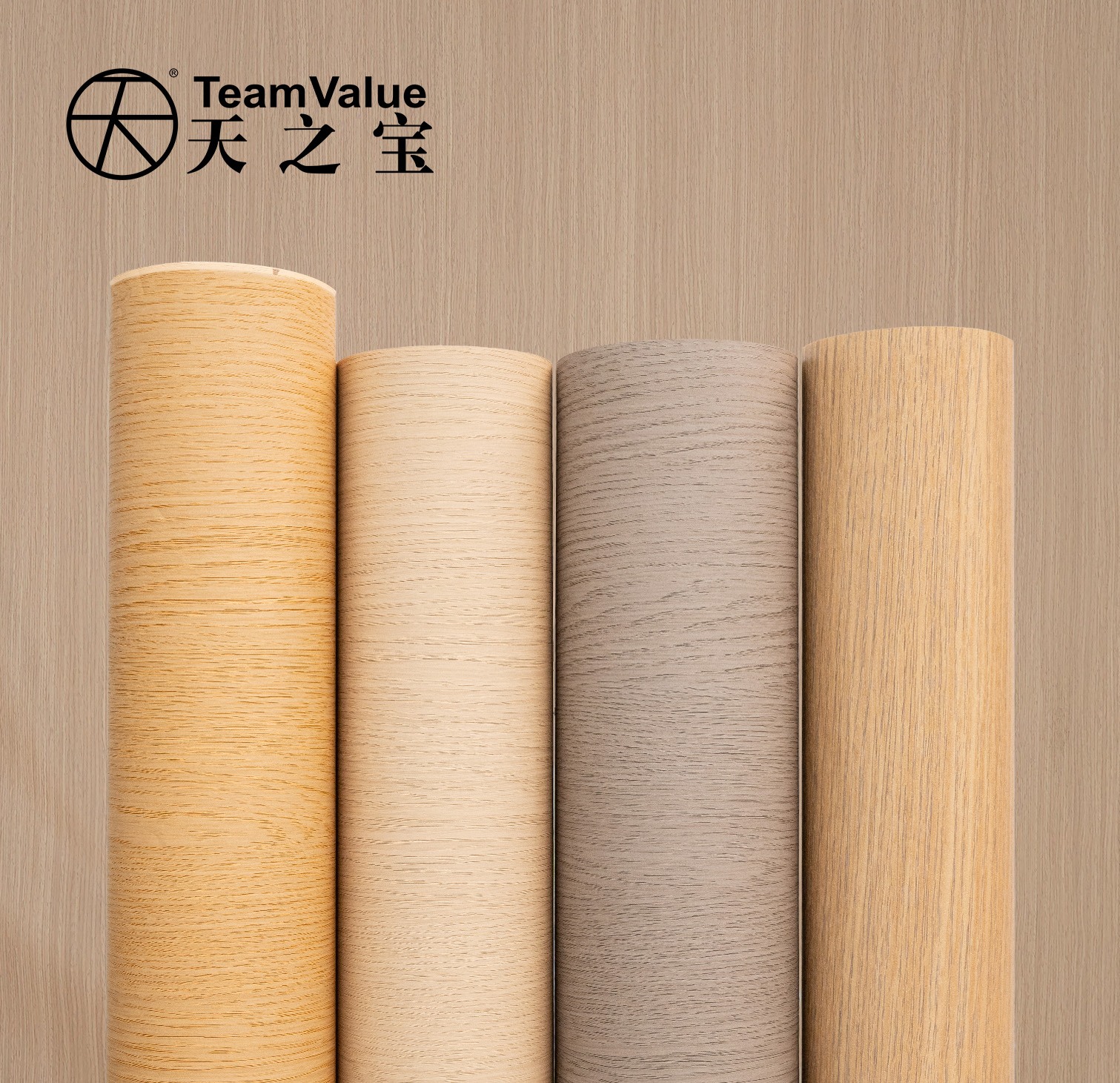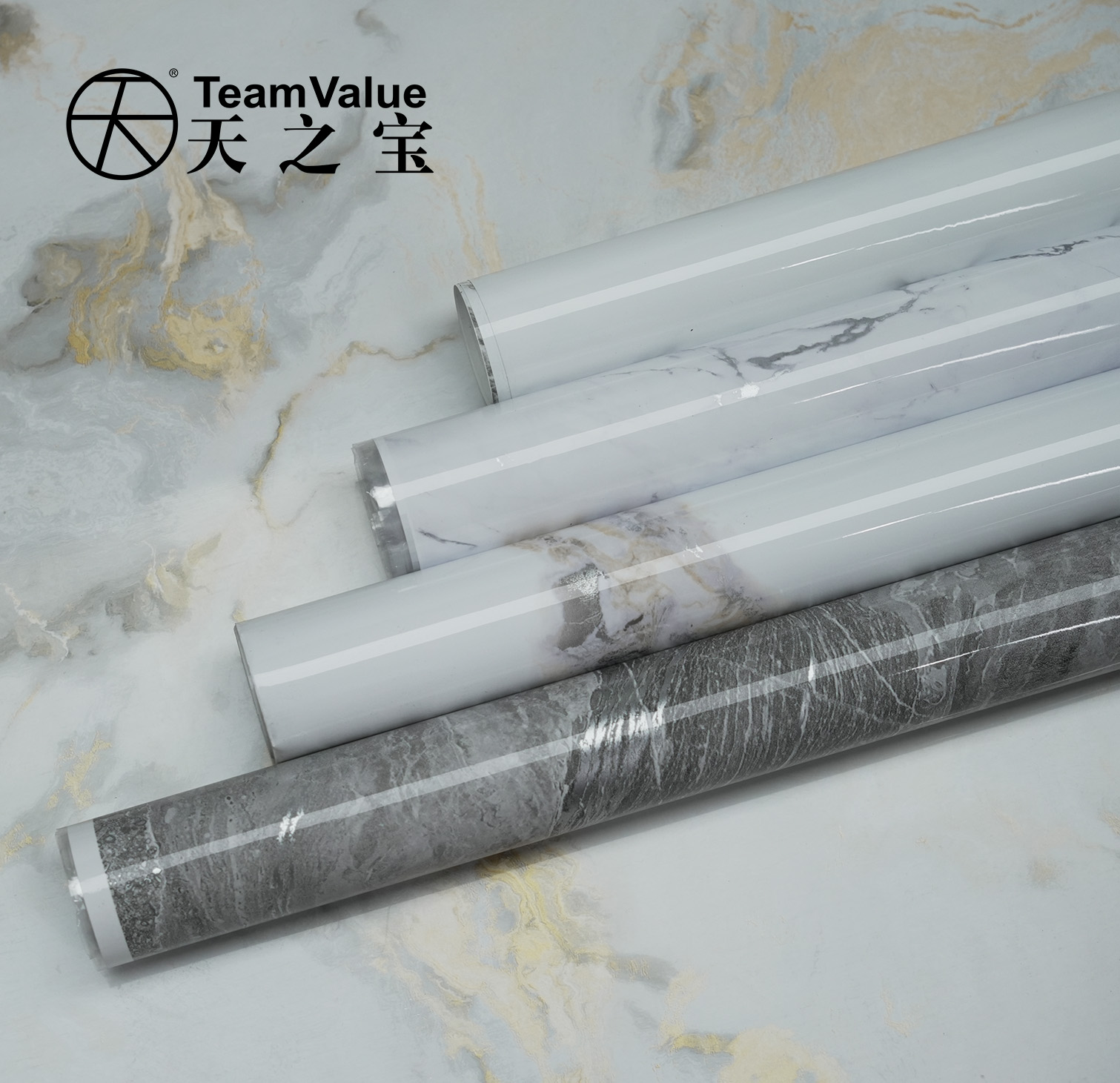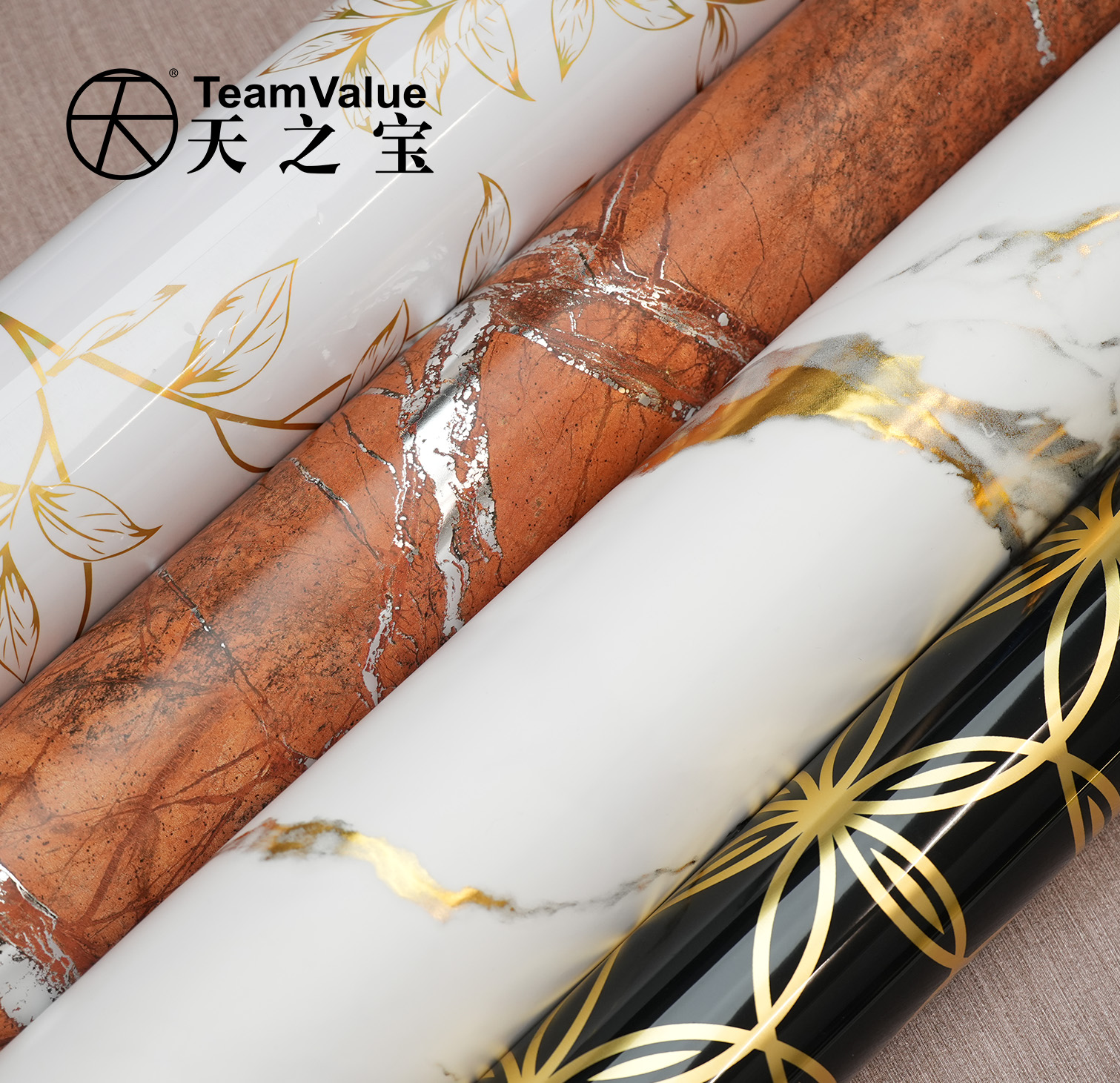PVC Film vs. Melamine Paper: Which Surface Solution is Right for Your Project?
When selecting decorative surfaces for furniture, cabinets, or interior applications, PVC film and melamine paper are two prevalent choices. While both serve as cost-effective and visually appealing finishes, they possess distinct characteristics. Understanding their differences is crucial for making an informed decision.
Material Composition & Production
PVC Film
u Primarily composed of Polyvinyl Chloride (PVC) resins, plasticizers, stabilizers, and pigments.
u Produced via the calendering process: Raw materials are mixed, heated, fused, and then pressed into thin, continuous sheets through heavy rollers. A decorative pattern or color layer is usually laminated onto a PVC base layer. A primer layer and adhesive backing are often included.
u Primarily composed of Polyvinyl Chloride (PVC) resins, plasticizers, stabilizers, and pigments.
Melamine Paper
u Starts with a base decorative printed paper. This paper is then soaked (impregnated) in melamine-formaldehyde resins.
u The impregnated paper is dried under controlled conditions, allowing the resin to partially cure (reach the B-stage). It remains in a semi-cured state until the final hot-pressing application onto a substrate like particleboard or MDF.
Physical Properties & Performance
Feature | PVC Film | Melamine Paper |
Flexibility | Excellent Easily conforms to curves and complex profiles. | Rigid Only suitable for flat surfaces. Breaks if bent. |
Moisture Resistance | Superior Highly waterproof, ideal for humid environments (bathrooms, kitchens). | Good Resists moisture swell better than raw wood, but edges are vulnerable if not perfectly sealed. |
Chemical Resistance | Very Good Resists common household cleaners, oils, and mild acids/alkalis. | Moderate Can be damaged by strong cleaners or solvents. Prone to staining. |
Scratch & Impact Resistance | Very Good Durable surface, better resistance to impacts. | Hard but Brittle Scratch-resistant surface, but chips easily on edges. |
Heat Resistance | Moderate Can soften/warp under high, direct heat (e.g., hot pans). | Good Better resistance to brief exposure to moderate heat. |
Seamlessness | Achievable Can wrap edges continuously, creating invisible seams. | Visible Seams Edges require separate application of matching or contrasting edge banding. |
Applications & Suitability
PVC Film:
u Ideal for : Cabinet doors/drawer fronts (especially curved or profiled), wall panels, furniture components with curves, commercial fixtures, laboratory surfaces, marine applications, humid areas, applications requiring seamless wrapped edges, high-traffic areas needing durability.
u Substrates : MDF, Plywood, Particleboard, Metal (with proper adhesive).
Melamine Paper
u Ideal for: Flat cabinet components (shelves, side panels, flat doors), office furniture, tabletops (especially laminated with HPL for durability), budget-friendly flat-pack furniture, applications where a very hard surface is needed.
u Substrates: Almost exclusively Particleboard or MDF (flat panels).
Cost & Installation
PVC Film: Generally higher material cost than melamine paper. Requires specialized application techniques like vacuum forming or edge banding machines for optimal results (especially on profiles). Can be applied to finished parts.
Melamine Paper: Lower material cost. Applied during the board manufacturing process using high-pressure laminating presses. This is a factory-only process; it cannot be applied to finished components. Installation cost is embedded in the board price.
Environmental & Safety
PVC Film : Modern high-quality PVC films often use phthalate-free plasticizers and lead-free stabilizers. Look for low-VOC and RoHS compliant products. Recyclable through specific programs, though landfill disposal is common. Generally considered chemically stable in use.
Melamine Paper : Concerns primarily revolve around potential formaldehyde emissions from the resins, especially if not meeting strict standards (like E0 or CARB Phase 2). Look for low-formaldehyde certification. Not easily recyclable due to the resin/paper composite. The cured surface is very stable.
Conclusion
Choosing between PVC film and melamine paper hinges on your project's specific demands:
Choose PVC Film when you need: Flexibility for curves/profiles, superior moisture/chemical resistance, seamless wrapped edges, durability in demanding environments, or the ability to finish components post-manufacturing. (Ideal for premium, durable, and design-flexible applications.)
Choose Melamine Paper when: Your project involves only flat surfaces, budget is a primary concern, high surface hardness is critical, and the application can be done at the panel manufacturing stage. (Ideal for cost-effective, flat panel solutions like shelves and cabinet internals.)
For projects requiring aesthetics, durability, moisture resistance, and the freedom to incorporate curves or seamless finishes, Team Value PVC decorative film offers a versatile and high-performance solution. Explore our range of PVC films designed to elevate your next project!





